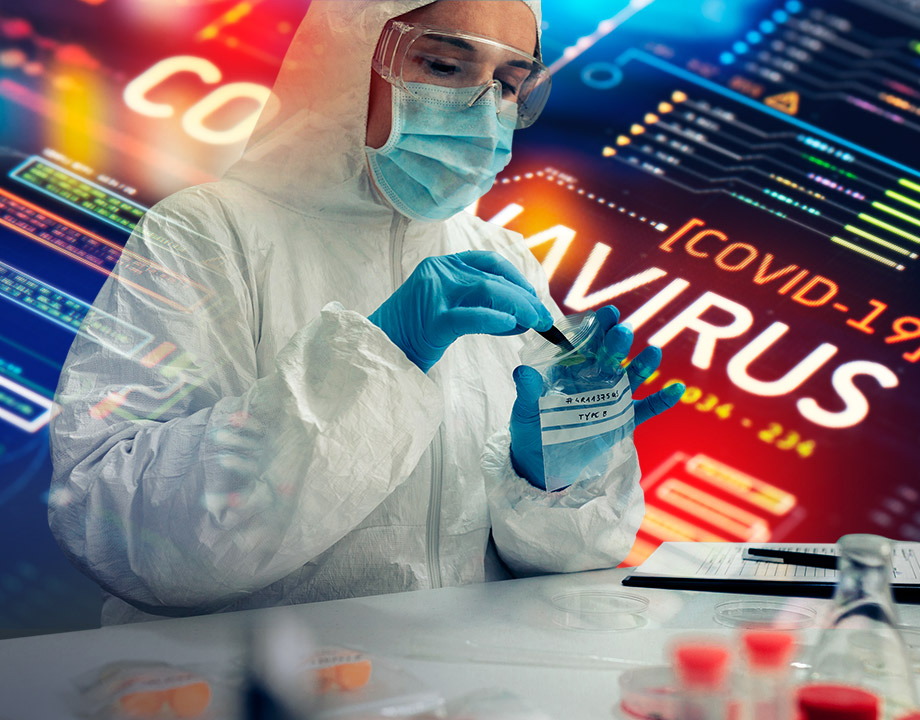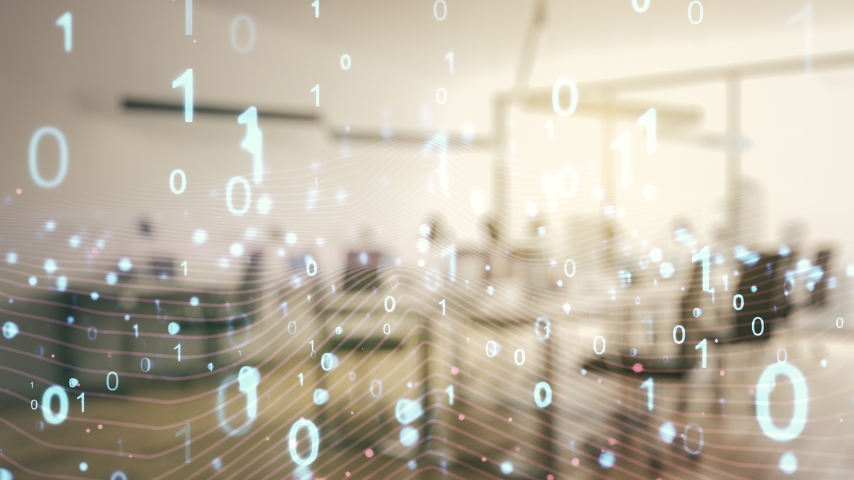Modeling the Effect of Covid-19 on Supply Chains
Modeling the Effect of Covid-19 on Supply Chains


Georgia Tech engineering professor draws on years of pandemic work.
It becomes clearer and clearer every day how critical and varied are the roles of engineers in the effort to win the battle with COVID-19.
So many engineers are at the heart of those heeding the call for help: Students and faculty at Stony Brook New York’s iCreate innovation lab are turning all of their 3D printers on full-speed to build layer by layer quickly designed plastic face shields. At major manufacturers such as Ford, 3M and Nike, engineers are involved with rapidly converting production lines to make much-needed personal protective equipment (PPE) for health care workers. Small companies are pitching in, too.
In other labs, researchers are developing models to understand how the spread of the coronavirus is changing the economy.
Pinar Keskinocak, professor for systems engineering and founder-director of the Center for Health and Humanitarian Systems at Georgia Institute of Technology, is just one example. Much of her career has focused on the interconnection of pandemics and systems, such as the economic damage caused by supply chain disruption and how reactions to that can worsen a pandemic.
Some of her recent work has involved infectious disease modeling. This includes evaluating intervention strategies and resource allocation as well as disaster preparedness and response, especially whether healthcare facilities have the right inventory at the right time.
“Whenever there is a complex problem, it needs serious analysis or technology and that’s where an engineer comes in,” Keskinocak said. “This is exactly the situation now, very complex, dynamic and uncertain. It’s difficult to understand what’s going on or make decisions just by sitting around a table and discussing. We need expertise in engineering to be able to understand the dynamics of the disease spread and then to evaluate the effectiveness of different types of intervention strategies, particularly related to how best to allocate limited resources.”
Keskinocak has done disease modeling for cholera, guinea worm disease, and malaria as well as for pandemic flu. She is adapting the pandemic flu model for COVID-19, looking at its effect on healthcare systems and supply chains.
“The diseases all differ in terms of transmission. But you have to take a system approach in all of them,” she said. “Something starts in some part of the system and then spreads depending on conditions, such as whether there are social interactions and the environment and the climate. We use math models to capture and understand the disease, both geographically and over time. The second part is the action - what do we do about it. How do we allocate our limited resources to put into place an intervention and over time as the disease progresses, how do we get the most impact," she added.
Listen to a Podcast: Ventilation System to Prevent Virus Spread
With malaria, for example, she said that if the intervention includes spraying inside people’s houses, you wouldn’t want to spray every house all the time for a variety of reasons, including not putting too much chemical in a home. So the ideal frequency and timing of spraying as the disease progresses needs to be determined.
“These are the kind of dynamics that we capture in our engineering models,” Keskinocak said.
The pandemic flu model that she is adapting is an agent-based model, which simulates actions and interactions of entities, called agents, in this case individuals. The agents are created with demographic information, such as ages, home addresses, family members, workplace and school information to be able to capture behaviors, interactions and relationships among them. Then the disease information is incorporated: whether the agents have been exposed, have symptoms of the disease have been tested, have recovered, and more.
Capturing all of these different states and interactions and using information such as the incubation period and how long one should stay isolated can provide valuable information about the dynamics of the real-world society that the model imitates, she said.
“Think of it as a computerized version of what is happening in society,” Keskinocak said.
As she receives more information from the real world, she continues to adjust the model. Although there are still a lot of unanswered questions and scenarios about COVID-19, the model does yield important high-level insights.
The impact of social distancing is one of them, she said. “We have shown this in our previous [models] that if you implement social distancing and depending on how long, you will impact the curve, pushing the peak down and reducing the total number of those diseased and the number of additional infections. High level insights are not going to change just because of the different kind of virus. It’s the actual numbers that change that are specific to a disease.”
Further Reading: Coronavirus Updates: Engineers to the Rescue
Keskinocak believes this pandemic may spur some to tackle total system redesigns. “I think COVID-19 is going to make many of us think very carefully about our supply chain, the visibility that you get in the supply chain, and flexibility, and I’m not just talking about supplying toilet paper,” she said.
The healthcare system is in itself a supply chain that needs resources, physical resources, such as hospitals, clinics and other places where people receive services, as well as resources such as six-month supplies, and it needs people. The goal is to bring the supply side and demand side together in order to give patients a better outcome.
“For many engineering fields, this is a great opportunity to think outside the box and to think about new technologies that could help us when we face a situation such as this one,” she said. “On the engineering side, I can imagine new technologies being developed for PPEs, also for socializing without being in the same room. It’s an opportunity, as sad as it might be, for us to think about interesting research problems to make a positive impact.”
Nancy Giges is a technology writer.
So many engineers are at the heart of those heeding the call for help: Students and faculty at Stony Brook New York’s iCreate innovation lab are turning all of their 3D printers on full-speed to build layer by layer quickly designed plastic face shields. At major manufacturers such as Ford, 3M and Nike, engineers are involved with rapidly converting production lines to make much-needed personal protective equipment (PPE) for health care workers. Small companies are pitching in, too.
In other labs, researchers are developing models to understand how the spread of the coronavirus is changing the economy.
Pinar Keskinocak, professor for systems engineering and founder-director of the Center for Health and Humanitarian Systems at Georgia Institute of Technology, is just one example. Much of her career has focused on the interconnection of pandemics and systems, such as the economic damage caused by supply chain disruption and how reactions to that can worsen a pandemic.
Some of her recent work has involved infectious disease modeling. This includes evaluating intervention strategies and resource allocation as well as disaster preparedness and response, especially whether healthcare facilities have the right inventory at the right time.
“Whenever there is a complex problem, it needs serious analysis or technology and that’s where an engineer comes in,” Keskinocak said. “This is exactly the situation now, very complex, dynamic and uncertain. It’s difficult to understand what’s going on or make decisions just by sitting around a table and discussing. We need expertise in engineering to be able to understand the dynamics of the disease spread and then to evaluate the effectiveness of different types of intervention strategies, particularly related to how best to allocate limited resources.”
Keskinocak has done disease modeling for cholera, guinea worm disease, and malaria as well as for pandemic flu. She is adapting the pandemic flu model for COVID-19, looking at its effect on healthcare systems and supply chains.
“The diseases all differ in terms of transmission. But you have to take a system approach in all of them,” she said. “Something starts in some part of the system and then spreads depending on conditions, such as whether there are social interactions and the environment and the climate. We use math models to capture and understand the disease, both geographically and over time. The second part is the action - what do we do about it. How do we allocate our limited resources to put into place an intervention and over time as the disease progresses, how do we get the most impact," she added.
Listen to a Podcast: Ventilation System to Prevent Virus Spread
With malaria, for example, she said that if the intervention includes spraying inside people’s houses, you wouldn’t want to spray every house all the time for a variety of reasons, including not putting too much chemical in a home. So the ideal frequency and timing of spraying as the disease progresses needs to be determined.
“These are the kind of dynamics that we capture in our engineering models,” Keskinocak said.
The pandemic flu model that she is adapting is an agent-based model, which simulates actions and interactions of entities, called agents, in this case individuals. The agents are created with demographic information, such as ages, home addresses, family members, workplace and school information to be able to capture behaviors, interactions and relationships among them. Then the disease information is incorporated: whether the agents have been exposed, have symptoms of the disease have been tested, have recovered, and more.
Capturing all of these different states and interactions and using information such as the incubation period and how long one should stay isolated can provide valuable information about the dynamics of the real-world society that the model imitates, she said.
“Think of it as a computerized version of what is happening in society,” Keskinocak said.
As she receives more information from the real world, she continues to adjust the model. Although there are still a lot of unanswered questions and scenarios about COVID-19, the model does yield important high-level insights.
The impact of social distancing is one of them, she said. “We have shown this in our previous [models] that if you implement social distancing and depending on how long, you will impact the curve, pushing the peak down and reducing the total number of those diseased and the number of additional infections. High level insights are not going to change just because of the different kind of virus. It’s the actual numbers that change that are specific to a disease.”
Further Reading: Coronavirus Updates: Engineers to the Rescue
Keskinocak believes this pandemic may spur some to tackle total system redesigns. “I think COVID-19 is going to make many of us think very carefully about our supply chain, the visibility that you get in the supply chain, and flexibility, and I’m not just talking about supplying toilet paper,” she said.
The healthcare system is in itself a supply chain that needs resources, physical resources, such as hospitals, clinics and other places where people receive services, as well as resources such as six-month supplies, and it needs people. The goal is to bring the supply side and demand side together in order to give patients a better outcome.
“For many engineering fields, this is a great opportunity to think outside the box and to think about new technologies that could help us when we face a situation such as this one,” she said. “On the engineering side, I can imagine new technologies being developed for PPEs, also for socializing without being in the same room. It’s an opportunity, as sad as it might be, for us to think about interesting research problems to make a positive impact.”
Nancy Giges is a technology writer.





